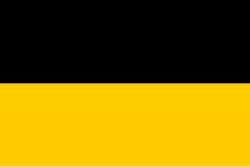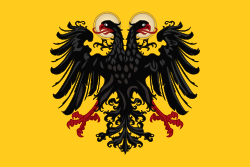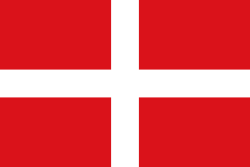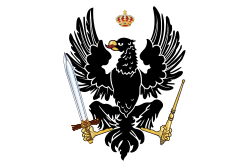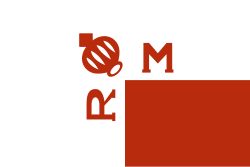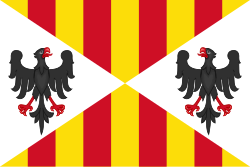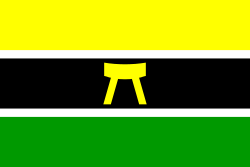Velká francouzská válka
Velká francouzská válka je označení používané pro sérii konfliktů v letech 1792 až 1815, známých jako francouzské revoluční a napoleonské války. Bojovala v ní revoluční Francie proti většině Evropy.
Průběh
Roku 1789 začala Velká francouzská revoluce a roku 1792 začala válka první koalice jako odpověď na popravu francouzského krále Ludvíka XVI. a jeho manželky, královny Marie Antoinetty. Tím začaly revoluční války. První koalice se rozpadla roku 1797 po italském tažení vedeném generálem Bonapartem. Brzy poté zahájil Bonaparte tažení do Egypta, ale nepovedlo se mu dosáhnout rozhodného vítězství a nakonec se musel vrátit, protože v Evropě mezitím vznikla druhá koalice, která pod velením ruského maršála Suvorova porážela revoluční vojska v Itálii.
Napoleon 14. června 1800 porazil koalici u Marenga a postupoval do Rakouska, které raději uzavřelo mír; ten nakonec uzavřely i ostatní členové koalice. Roku 1803 vpadl Napoleon do Hannoverska a tím zahájil napoleonské války. Po jeho korunovaci císařem (2. prosince 1804) vznikla třetí koalice, jež se však po bitvách u Ulmu a Slavkova rozpadla. Napoleon poté zvítězil nad čtvrtou koalicí, ale válka ve Španělsku skončila neúspěchem a ve válce páté koalice prohrál bitvu u Aspern. Po bitvě u Aspern Napoleon nakonec zvítězil u Wagramu, ale to již bylo jasné, že není neporazitelný.
Tažení do Ruska roku 1812 skončilo zničením jeho půlmilionové armády a následným vznikem šesté koalice. Ta mu uštědřila zdrcující porážku u Lipska a 30. března 1814 obsadila Paříž. Napoleon musel abdikovat a odejít do exilu na ostrově Elba. 1. března 1815 z Elby utekl a později se vylodil v zátoce San Juan u Cannes. Francouzský král Ludvík XVIII. musel prchnout, ale Napoleon zůstal císařem jen sto dní, neboť 18. června 1815 mu nově vzniklá sedmá koalice uštědřila zdrcující porážku u Waterloo. Napoleon nyní byl deportován na ostrov Svatá Helena, kde roku 1821 zemřel. Poválečné uspořádání Evropy bylo dohodnuto na Vídeňském kongresu.
Ve francouzských revolučních válkých zahynulo 1 100 000 vojáků a v napoleonských 3 350 000 až 6 500 000. Šlo až do první světové války o největší ozbrojený konflikt historie. Bojovalo se v severní a jižní Africe, jižní a Severní Americe, Karibské oblasti, na Blízkém východě, v Indii a většině Atlantského a Indické oceánu.
Odkazy
Literatura
- Kolektiv autorů: Války a válečníci
- Lev Tolstoj: Vojna a mír
- P. A. Žilin: Kutuzov
- Josef Hotmar: Dobrodružství Velké revoluce 1789–1799
- Geofrey Regan: Guinnesova kniha válečných omylů
Související články
- Moderní dějiny
- Velká francouzská revoluce
- Napoleon Bonaparte
- Vídeňský kongres
- Francouzské revoluční války
- Napoleonské války
Externí odkazy
 Obrázky, zvuky či videa k tématu koaliční války na Wikimedia Commons
Obrázky, zvuky či videa k tématu koaliční války na Wikimedia Commons
Média použitá na této stránce
Autor: Sodacan, Licence: CC BY-SA 3.0
Flag of Napoleonic Kingdom of Italy
No official flag.
An Ottoman flag with an eight pointed star rather than the five pointed star which later became typical.
Swedish flag used by Norwegian ships south of Cape Finisterre 1815-1818.
Autor: previous version User:Ignaciogavira ; current version HansenBCN, designs from SanchoPanzaXXI, Licence: CC BY-SA 3.0
Flag of Spain (1785-1873 and 1875-1931)
Autor: previous version User:Ignaciogavira ; current version HansenBCN, designs from SanchoPanzaXXI, Licence: CC BY-SA 3.0
Flag of Spain (1785-1873 and 1875-1931)
House colours of the House of Habsburg
Autor: David Liuzzo, eagle by N3MO, Licence: CC BY-SA 3.0
Banner of the Holy Roman Empire, double headed eagle with halos (1400-1806)
Autor: Sir Iain, eagle by N3MO, Licence: CC BY-SA 3.0
Banner of the Holy Roman Empire, with the arms of Austria.
Imperio Portugués
Flag of Bavaria (striped)
Autor: Ssolbergj + authors of source files, Licence: CC BY-SA 3.0
Flag of Norway (1814-1821)
Autor:
Flag of Poland (Duchy of Warsaw), used from 1807 to 1815.
Flag of the Kingdom of Württemberg; Ratio (3:5)
Flag of the Napoleonic Kingdom of Naples, from 1811 to 1815.
Flag of the Septinsular Republic (1800-1807)
Autor: Sodacan, Licence: CC BY-SA 3.0
Královská standarda francouzského krále (používaný jako státní vlajka Francouzským královstvím v období absolutní monarchie). Používaná byla v letech 1638 až 1790.
Autor: Dbachmann, Licence: CC BY-SA 3.0
Early form of the Swiss flag, used as a field sign by troops under confederate command from ca. the 1470s. This was replaced by various flammé designs during the 17th century, but this older design was taken as the basis for the modern flag of 1815.
Drawn after the earliest depiction of the field sign, in the Lucerne Chronicle of 1513, in the scene showing the battle of Nancy (1477), see File:Deutsche Geschichte5-290.jpg.
A triangular version of the flag saw slightly earlier use, possibly from the 1420s, see File:Ch-1422a.png, and File:St. Jakob Tschachtlan.jpg for a 1470 depiction of the triangular flag in a scene of 1444.Autor: Oren neu dag, Licence: CC BY-SA 2.5
A vectorized Version of Flag of Hanover (1692).gif
Horse image taken from
War Ensign of the Kingdom of Sardinia
It was the Naval Ensign of the Kingdom of France (pure white version) as used before 1789, and between 1814/15 and 1830.
(c) Flanker, CC BY-SA 3.0
flag of the Grand Duchy of Tuscany, (1765-1800, 1815-1848, 1849-1860).[1]
Flag of Haiti from 1803 to 1804
Flag of Iran during the Qajar dynasty, i.e. the flag of Agha Mohammad Khan.
Digital reproduction of the Star Spangled Banner Flag, the 15-star and 15-stripe U.S. garrison flag which flew over Fort McHenry following the Battle of Baltimore in the War of 1812. Seeing the flag during the battle, and again the following morning, inspired Francis Scott Key's song The Star-Spangled Banner, now the U.S. national anthem. During the battle a smaller "storm flag" was flown; it was replaced by this larger flag early the next morning, which is the flag Key saw then. This larger flag is now displayed at the National Museum of American History in Washington, D.C. For several decades it remained in the family of Fort McHenry's commanding officer, before being given to the Smithsonian in 1912. The family cut pieces out of the flag from time to time as gifts.
The original flag was 42 feet long and 30 feet high, with each stripe being about two feet, and the stars being about two feet in diameter. It was made by Mary Young Pickersgill and her assistants. More info on the original dimensions here. The stars seem to mostly point to the side, except for one (the bottom right) which points down. One star has been cut out of the actual flag, so I'm guessing that originally pointed to the side as well (Fort McHenry flies a flag (File:Ft mchenry 15starflag.jpg) with a similar star pattern, but it looks like they are all to the side, and the other dimensions look similar to a modern flag). I guesstimated other dimensions and star positions based on File:Star-Spangled-Banner-1908-1919.jpg; the union (blue area) looks to be about 19 feet wide. The star rows look to be evenly distributed; i.e. the distance between the top/bottom edges and the center of a star row looks to be about the same as the distance between two (centers of) rows. Not so left-to-right; they are pretty close to the right edge and even closer to the hoist side. Also available here, page 12.Autor:
Bandera de guerra y del reino de Etruria con el escudo de Armas completo.
National flag of the Batavian Republic, as decreed by the States General on February 14, 1796.
Flagge Liechtensteins (1719-1852)
Flag of the Kingdom of Saxony; Ratio (2:3)
Autor: Tibetan Pop Rocks, Licence: CC BY-SA 3.0
Merchant flag of the Papal States. In use since 1803, officially adopted on 7 June 1815.
Autor:
Drapeau de l'Espagne sous Joseph Bonaparte. Enfin Joseph Bonaparte a, en 1808, changé ses armoiries et créé un nouveau drapeau : retour au blanc pour le fond, dessus, un écu divisé en six avec les armes de la Castille, du Leon, de l’Aragon, de la Navarre, de Grenade et des possessions américaines, avec par dessus encore l’aigle de la famille impériale.
Autor: Spesh531, Licence: CC BY-SA 3.0
Flag of the Prince-Bishopric of Montenegro
Při zobrazení tohoto souboru lze snadno přidat orámování
Autor: Tento vektorový obrázek byl vytvořen programem Inkscape ., Licence: CC BY-SA 4.0
Flag of the Electorate of Bavaria
Imperio Portugués








